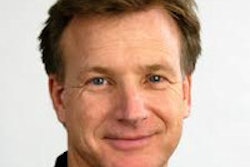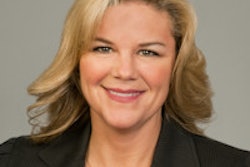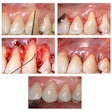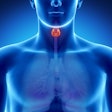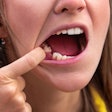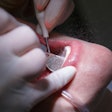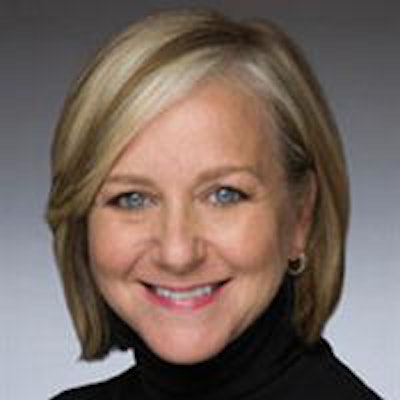
DrBicuspid.com is pleased to present the next installment of Leaders in Dentistry, a series of interviews with researchers, practitioners, and opinion leaders who are influencing the practice of dentistry.
When dental hygienists from across the U.S. and around the world gather in Boston this week for the American Dental Hygienists' Association (ADHA) annual session, they will be celebrating the 100th anniversary of their profession.
On the eve of this landmark event, ADHA Executive Director Ann Battrell, MSDH, paused to take stock of the past century and to look ahead to the future of dental hygiene.
DrBicuspid.com: It was in 1913 that the Fones School of Dental Hygiene opened in Bridgeport, CT. The founder of the school was Dr. Alfred Fones, who trained chairside assistant Irene Newman to perform prophylactic procedures that were found to improve patients' oral health. Thus a new dental workforce model was born. Can you tell us a little more about that story, and what the legacy of Dr. Fones and Irene Newman mean to you and the profession?
 Ann Battrell, MSDH, executive director, American Dental Hygienists' Association.
Ann Battrell, MSDH, executive director, American Dental Hygienists' Association.
Ann Battrell: The legacy established by these two pioneers can be seen in the health of our nation. Dr. Fones recognized the importance of prevention to oral health, as well as educating other health professionals to expand the reach of the dental profession.
It's not often that you can point to a profession and say, "This is our founder," but Dr. Fones devoted his life to building on the foundation that he and Irene Newman established, and their legacy is a robust workforce that is continually evolving.
The spirit of collaboration begun by Dr. Fones and Newman continues today. More healthcare professionals -- and patients too -- are recognizing the critical link between oral health and total health. So the dental team naturally is expanding to include other health professions. The result is oral health services are being delivered in more settings in partnership with more healthcare professionals, including physicians, nurse practitioners, and others.
Looking back over the century, what are the most important ways that the profession has evolved?
The expansion of scientific knowledge and evidence that are the underpinning of dental hygiene practice is a significant change driver for the dental hygiene profession. As we seek to provide more services to more people, we must also utilize the most current science and technology available to us today to prevent and treat oral diseases.
We have seen dental hygiene evolve more in the last 20 years than in the previous 80. Diversity in terms of dental hygienists' roles, their practice settings, and their scope of practice has been key to the continued evolution of the profession. We are seeing dental hygienists with different professional titles, such as the Dental Hygienist in Expanded Practice in Oregon and the Dental Hygienist in Alternative Practice in California, as well as the Expanded Care Permits that hygienists in Kansas can work under.
We are seeing dental hygienists expanding into schools and other public health settings. We are seeing new dental hygiene-based workforce models emerge, such as the advanced dental therapist in Minnesota. These new models, which operate in much the same way as the nurse practitioner model applied in many different healthcare settings, can help get critical oral healthcare to the people most in need -- the more than 31 million people living in designated dental health professional shortage areas.
Another important way the profession has evolved has been the growth of collaboration.
Collaborative leadership displayed by dental hygienists has helped win acceptance for dental hygienists in new practice settings. Working together with our partners in healthcare allows everyone to achieve more than any of us could on our own.
Currently, 35 states are considered "direct access" states by the ADHA -- states where hygienists are able to initiate treatment based upon their own assessments of patient needs without the specific authorization of a dentist. Do you think the rest of the states will go this way as well? If so, what will it take to make that happen? If not, why not?
In 1995, five states were designated as direct access states. Today, 35 states are direct access states. An important lesson to learn here is that you can't stop progress! Across the U.S., stakeholder groups and coalitions are forming to address the access-to-care crisis, and the ADHA and our state leaders have every confidence that the remaining 15 states will take on the legislative and regulatory challenge to become direct access states. We are very proud of our efforts to join national and state coalitions to make real change happen across the U.S. We know that dental hygienists can and should play an important role in increasing access to oral healthcare services.
This year, the Commission on Dental Accreditation (CODA) is holding open hearings on accreditation standards for dental therapy education programs and inviting public comment at various professional meetings. Will one of these hearings be part of the ADHA conference? Can you explain what is at stake in these standards for dental hygienists?
CODA is accepting public comments on the proposed dental therapy standards. Originally, CODA did not schedule a public hearing at ADHA's Annual Session. As a legitimate community of interest in this issue, the ADHA requested a public hearing be held at our annual session in Boston, and that hearing is scheduled for June 22, 2:30 p.m. to 4 p.m.
We look forward to offering our comments. At issue is the absence of a dental hygiene-based dental therapy track for the proposed dental therapy standards. A CODA task force decided the proposed dental therapy standards should be based on a nondental hygiene track and has circulated draft accreditation standards for a nondental hygiene track, despite clear requests for development of both hygiene and nonhygiene tracks. Minnesota, the only state with dental therapy programs seeking accreditation, has both dental hygiene and nondental hygiene tracks. This being the case, we believe that, logically, the standards should reflect both. Standards need to be developed to accurately reflect current programs, practice, and laws.
The development of dental therapy accreditation standards marks a significant time in the evolution of the dental hygiene profession. We encourage all dental hygienists to share their opinions on the draft dental therapy standards during our annual meeting. Our collective voice as a profession must be heard on this important document. The CODA hearing is the perfect opportunity to advocate for dental hygiene education.
Consumer advocate Erin Brockovich will be the keynote speaker for the June 20 opening plenary session in Boston. It's hard not to think of her successful battle against Pacific Gas and Electric over toxic groundwater pollution as a David and Goliath story. What kind of message do you hope she will bring to the members?
Erin Brockovich's story is one of personal empowerment. She created opportunities for herself and the citizens of Hinkley and other California communities. I think that is what will resonate with our attendees. On one level, she encouraged citizens to stand up for themselves and the health and safety of their communities. On another level, she showed tremendous determination in staking out a better life for her and her children. Her story of personal empowerment is one that rings true for dental hygienists. We want dental hygienists to feel empowered to take their future in their hands and create opportunities for themselves. I'm sure attendees will walk away from her presentation inspired to make their professional lives better and make the profession itself better.
What will be some other highlights of the annual conference?
This annual session is packed with programs that celebrate 100 years of dental hygiene and also celebrate dental hygienists. The celebration kicks off with a Red Sox game, thanks to a generous donation of 700 tickets by Young Dental. In addition to Erin Brockovich, we have Oscar-winning actress Geena Davis, who will share her message of female empowerment and gender equity on June 22. We are bringing back the legendary Debbie Reynolds to serve as host for our Institute for Oral Health/President's Fundraising Gala on June 21. There will be two full days of exhibits with more than 115 companies, a commemorative booth for the 100th anniversary, and the ADHA/Henry Schein Dream Center, an interactive, hands-on operatory experience on the exhibit floor.
The Center for Lifelong Learning portion features six tracks of continuing education courses designed specifically for the professional roles of the dental hygienist at all stages of his or her career. We will also feature a session on the dental therapists in Minnesota and how that workforce model is successfully serving communities and patients.
Most important, attendees will be able to network with more than 2,500 dental hygienists and students from across the nation and from eight countries around the globe. We learn more from each other, and gain more through mutual support and knowledge sharing, than from any other source or through any other activity.
As executive director of the ADHA, you are leading dental hygienists into a new century. What are the biggest challenges you see ahead?
One of our collective significant challenges is the need to revise and update the dental hygiene educational curriculum to ensure that our future colleagues are academically and clinically prepared to practice dental hygiene in any setting they choose and in concert with a multitude of healthcare professionals.
To ensure our hygienists can continue to provide the quality of care the population deserves, ADHA will gather other healthcare leaders for a symposium later this year that promises to transform dental hygiene education. In September, key opinion leaders will meet in Chicago for "Transforming Dental Hygiene Education: Proud Past, Unlimited Future." This symposium will examine the current dental hygiene educational environment and consider a new road map for the future of dental hygiene education. Joining ADHA in producing this symposium is the Santa Fe Group, a dental think tank dedicated to improving oral health. The goal is to ensure dental hygiene students graduate with the knowledge and skills needed to serve all patients, help close the access-to-care gaps, and thrive in their profession. This is a very exciting time in dental hygiene and the timing for this important symposium couldn't be more perfect as we celebrate our 100th year as a profession.





